The History Of Toyota

Toyota Motor Corporation (トヨタ自動車株式会社, Toyota Jidosha Kabushiki-gaisha?) is a multinational corporation headquartered in Japan and is the world's largest automaker. As of 2008, Toyota employs approximately 316,000 people around the world.
In 1934, while still a department of Toyota Industries, it created its first product Type A engine and in 1936 its first passenger car the Toyota AA. The company was eventually founded by Kiichiro Toyoda in 1937 as a spinoff from his father's company Toyota Industries to create automobiles. Toyota currently owns and operates Lexus and Scion brands and has a majority shareholding stake in Daihatsu Motors, and minority shareholdings in Fuji Heavy Industries Isuzu Motors, and Yamaha Motors. The company includes 522 subsidiaries.
Toyota is headquartered in Toyota City and Nagoya (both in Aichi), and in Tokyo. In addition to manufacturing automobiles, Toyota provides financial services through its division Toyota Financial Services and also creates robots. Toyota Industries and Finance divisions form the bulk of the Toyota Group, one of the largest conglomerates in the world.
In January 2009 it announced the closure of all of its Japanese plants for 11 days to reduce output and stocks of unsold vehicles.
Early in 2009, although company spokespersons declined confirmation, media sources reported that Akio Toyoda, grandson of the founder, will be promoted in June from vice-president to the position of President, replacing Katsuaki Watanabe.
Vehicles were originally sold under the name "Toyoda" (トヨダ), from the family name of the company's founder, Kiichiro Toyoda. In September 1936, the company ran a public competition to design a new logo. Out of 27,000 entries the winning entry was the three Japanese katakana letters for "Toyoda" in a circle. But Risaburo Toyoda, who had married into the family and was not born with that name, preferred "Toyota" (トヨタ) because it took eight brush strokes (a fortuitous number) to write in Japanese, was visually simpler (leaving off two ticks at the end) and with a voiceless consonant instead of a voiced one (voiced consonant is considered "murky" or "muddy" sound compared to the voiceless consonant, which is "clear"). Since "Toyoda" literally means "fertile rice paddies", changing the name also helped to distance the company from associations with old fashioned farming. The newly formed word was trademarked and the company was registered in August 1937 as the "Toyota Motor Company".
In predominantly Chinese speaking countries, Toyota is known as "豊田". These are the same characters as the founding family's name "Toyoda" in Japanese, which translate to "fertile rice paddies" in the Chinese language as well.
From September 1947, Toyota's small-sized vehicles were sold under the name "Toyopet" (トヨペット). The first vehicle sold under this name was the Toyopet SA but it also included vehicles such as the Toyopet SB light truck, Toyopet Stout light truck, Toyopet Crown and the Toyopet Corona. However, when Toyota eventually entered the American market in 1957 with the Crown, the name was not well received due to connotations of Toys and pets. The name was soon dropped for the American market but continued in other markets until the mid 1960's.
In 1933, Toyoda Automatic Loom Works created a new division devoted to the production of automobiles under the direction of the founder's son, Kiichiro Toyoda. Kiichiro Toyoda had traveled to Europe and the United States in 1929 to investigate automobile production and had begun researching gasoline-powered engines in 1930. Toyoda Automatic Loom Works was encouraged to develop automobile production by the Japanese government, which needed domestic vehicle production partly due to the worldwide money shortage and partly due to the war with China. In 1934, the division produced its first Type A Engine, which was used in the first Model A1 passenger car in May 1935 and the G1 truck in August 1935. Production of the Model AA passenger car started in 1936. Early vehicles bear a striking resemblance to the Dodge Power Wagon and Chevrolet, with some parts actually interchanging with their American originals.
Although the Toyota Group is best known today for its cars, it is still in the textile business and still makes automatic looms, which are now computerized, and electric sewing machines which are available worldwide.
Toyota Motor Co. was established as an independent and separate company in 1937. Although the founding family's name is Toyoda (豊田), the company name was changed in order to signify the separation of the founders' work life from home life, to simplify the pronunciation, and to give the company a happy beginning. Toyota (トヨタ) is considered luckier than Toyoda (豊田) in Japan, where eight is regarded as a lucky number, and eight is the number of strokes it takes to write Toyota in katakana. In Chinese, the company and its vehicles are still referred to by the equivalent characters (traditional Chinese: 豐田; simplified Chinese: 丰田; pinyin: fēng tián), with Chinese reading.
During the Pacific War (World War II) the company was dedicated to truck production for the Imperial Japanese Army. Because of severe shortages in Japan, military trucks were kept as simple as possible. For example, the trucks had only one headlight on the center of the hood. The war ended shortly before a scheduled Allied bombing run on the Toyota factories in Aichi.
After the war, commercial passenger car production started in 1947 with the model SA. In 1950, a separate sales company, Toyota Motor Sales Co., was established (which lasted until July 1982). In April 1956, the Toyopet dealer chain was established. The following year, the Crown became the first Japanese car to be exported to the United States and Toyota's American and Brazilian divisions, Toyota Motor Sales Inc. and Toyota do Brasil S.A., were also established.
Toyota began to expand in the 1960s with a new research and development facility, a presence in Thailand was established, the 10 millionth model was produced, a Deming Prize and partnerships with Hino Motors and Daihatsu were also established. The first Toyota built outside Japan was in April 1963, at Port Melbourne in Australia. By the end of the decade, Toyota had established a worldwide presence, as the company had exported its one-millionth unit.
With high gas prices and a weak US economy in the summer of 2008, Toyota reported a double-digit decline in sales for the month of June, similar to figures reported by the Detroit Big Three. For Toyota, these were attributed mainly to slow sales of its Tundra pickup, as well as shortages of its fuel-efficient vehicles such as the Prius, Corolla and Yaris. In response, the company has announced plans to idle its truck plants, while shifting production at other facilities to manufacture in-demand vehicles.
The Toyota Motor Company was awarded its first Japanese Quality Control Award at the start 1980s and began participating in a wide variety of Motorsports. Due to the 1973 oil crisis consumers in the lucrative U.S. market began turning to small cars with better fuel economy. American car manufacturers had considered small economy cars to be an "entry level" product, and their small vehicles were made to a low level of quality in order to keep the price low. Japanese customers, however, had a long-standing tradition of demanding small fuel-efficient cars that were manufactured to a high level of quality.[citation needed] Because of this, companies like Toyota, Honda, and Nissan established a growing presence in North America in the 1970s.[citation needed]
In 1982, the Toyota Motor Company and Toyota Motor Sales merged into one company, the Toyota Motor Corporation. Two years later, Toyota entered into a joint venture with GM called NUMMI, the New United Motor Manufacturing, Inc, operating an automobile manufacturing plant in Fremont, California. The factory was an old General Motors plant that had been closed for two years. Toyota then started to establish new brands at the end of the 1980s, with the launch of their luxury division Lexus in 1989.
In the 1990s Toyota began to branch out from producing mostly compact cars by adding many larger and more luxurious vehicles to its lineup, including a full sized pickup, the T100 (and later the Tundra), several lines of SUVs, a sport version of the Camry, known as the Camry Solara, and the Scion brand, a group of several affordable, yet sporty, automobiles targeted specifically to young adults. Toyota also began production of the world's best selling hybrid car, the Prius, in 1997.
With a major presence with Europe, due to the success of Toyota Team Europe, the corporation decided to set up TMME, Toyota Motor Europe Marketing & Engineering, to help market vehicles in the continent. Two years later, Toyota set up a base in the United Kingdom, TMUK, as the company's cars had become very popular among British drivers. Bases in Indiana, Virginia and Tianjin were also set up. In 1999, the company decided to list itself on the New York and London Stock Exchange.
In 2001, Toyota's Toyo Trust and Banking merged to form the UFJ, United Financials of Japan, which was accused of corruption by the Japan's government for making bad loans to alleged Yakuza crime syndicates with executives accused of blocking Financial Service Agency inspections. The UFJ was listed among Fortune Magazine's largest money-losing corporations in the world, with Toyota's chairman serving as a director. At the time, the UFJ was one of the largest shareholders of Toyota. As a result of Japan's banking crisis, the UFJ was merged again to become Mitsubishi UFJ Financial Group.
In 2002, Toyota managed to enter a Formula One works team and establish joint ventures with French motoring companies Citroën and Peugeot, a year after Toyota started producing cars in France.
Toyota ranked eight on Forbes 2000 list of worlds leading companies for the year 2005. The company was number one in global automobile sales for the first quarter of 2008.
On December 7, 2004, a U.S. press release was issued stating that Toyota would be offering Sirius Satellite Radios. However, as late as Jan. 27, 2007, Sirius Satellite Radio and XM Satellite radio kits were not available for Toyota factory radios.[citation needed] While the press release enumerated nine models, only limited availability existed at the dealer level in the U.S. As of 2008, all Toyota and Scion models have either standard or available XM radio kits. Major Lexus dealerships have been offering satellite radio kits for Lexus vehicles since 2005, in addition to factory-equipped satellite radio models.
In 2007, Toyota released an update of its full size truck, the Tundra, produced in two American factories, one in Texas and one in Indiana. "Motor Trend" named the Tundra "Truck of the Year," and the 2007 Toyota Camry "Car of the Year" for 2007. It also began the construction of two new factories, one to build the RAV4 in Woodstock, Ontario and the other to build the Toyota Prius in Blue Springs, Mississippi. This plant was originally intended to build the Toyota Highlander, but Toyota decided to use the plant in Princeton, Indiana instead. The company has also found recent success with its smaller models - the Corolla and Yaris - as gas prices have risen rapidly in the last few years.
Main article: The Toyota WayToyota's management philosophy has evolved from the company's origins and has been reflected in the terms "Lean Manufacturing" and Just In Time Production, which it was instrumental in developing. The Toyota Way has four components: 1) Long-term thinking as a basis for management decisions, 2) a process for problem-solving, 3) adding value to the organization by developing its people, and 4) recognizing that continuously solving root problems drives organizational learning. The Toyota Way incorporates the Toyota Production System.
The Toyota Production System
Main article: Toyota Production SystemToyota has long been recognized as an industry leader in manufacturing and production. Three stories of its origin have been found, one that they studied Piggly-Wiggly's just-in-time distribution system, one that they followed the writings of W. Edwards Deming, and one that they were given the principles from an Army training program. It is possible that all are true. Regardless of the origin, the principles, described in Toyota's management philosophy, The Toyota Way, are as follows:
Toyota has grown to a large multinational corporation from where it started and expanded to different worldwide markets and countries by becoming the largest seller of cars in the beginning of 2007, the most profitable automaker ($11 billion in 2006) along with increasing sales in, among other countries, the United States. The world headquarters of Toyota are located in its home country in Toyota, Aichi, Japan. Its subsidiary, Toyota Financial Services sells financing and participates in other lines of business. Toyota brands include Scion and Lexus and the corporation is part of the Toyota Group. Toyota also owns majority stakes in Daihatsu, and 8.7% of Fuji Heavy Industries, which manufactures Subaru vehicles. They also acquired 5.9% of Isuzu Motors Ltd. on November 7, 2006 and will be introducing Isuzu diesel technology into their products.
Toyota has introduced new technologies including one of the first mass-produced hybrid gas-electric vehicles, of which it says it has sold 1 million globally (2007-06-07), Advanced Parking Guidance System (automatic parking), a four-speed electronically controlled automatic with buttons for power and economy shifting, and an eight-speed automatic transmission. Toyota, and Toyota-produced Lexus and Scion automobiles, consistently rank near the top in certain quality and reliability surveys, primarily J.D. Power and Consumer Reports.
In 2005, Toyota, combined with its half-owned subsidiary Daihatsu Motor Company, produced 8.54 million vehicles, about 500,000 fewer than the number produced by GM that year. Toyota has a large market share in the United States, but a small market share in Europe. Its also sells vehicles in Africa and is a market leader in Australia. Due to its Daihatsu subsidiary it has significant market shares in several fast-growing Southeast Asian countries.
According to the 2008 Fortune Global 500, Toyota Motor is the fifth largest company in the world. Since the recession of 2001, it has gained market share in the United States. Toyota's market share struggles in Europe where its Lexus brand has three tenths of one percent market share, compared to nearly two percent market share as the U.S. luxury segment leader.
In the first three months of 2007, Toyota together with its half-owned subsidiary Daihatsu reported number one sales of 2.348 million units. Toyota's brand sales had risen 9.2% largely on demand for Corolla and Camry sedans. The difference in performance was largely attributed to surging demand for fuel-efficient vehicles. In November 2006, Toyota Motor Manufacturing Texas added a facility in San Antonio. Toyota has experienced quality problems and was reprimanded by the government in Japan for its recall practices. Toyota currently maintains over 16% of the US market share and is listed second only to GM in terms of volume. Toyota Century is the official state car of the Japanese imperial family, namely for the Emperor of Japan Akihito.
Worldwide presence
Toyota has factories all over the world, manufacturing or assembling vehicles for local markets, including the Corolla. Toyota has manufacturing or assembly plants in Japan, Australia, India, Canada, Indonesia, Poland, South Africa, Turkey, Colombia, the United Kingdom, the United States, France, Brazil, Portugal, and more recently Pakistan, Argentina, Czech Republic, Mexico, Malaysia, Thailand, China, Vietnam, Venezuela, the Philippines, and Russia.
In 2002, Toyota initiated the "Innovative International Multi-purpose vehicle" project (IMV) to optimize global manufacturing and supply systems for pickup trucks and multipurpose vehicles, and to satisfy market demand in more than 140 countries worldwide. IMV called for diesel engines to be made in Thailand, gasoline engines in Indonesia and manual transmissions in the Philippines, for supply to the countries charged with vehicle production. For vehicle assembly, Toyota would use plants in Thailand, Indonesia, Argentina and South Africa. These four main IMV production and export bases supply Asia, Europe, Africa, Oceania, Latin America and the Middle East with three IMV vehicles: The Toyota Hilux (Vigo), the Fortuner, and the Toyota Innova.
Toyota has invested considerably into cleaner-burning vehicles such as the Prius, based on technology such as the Hybrid Synergy Drive. In 2002, Toyota successfully road-tested a new version of the RAV4 which ran on a Hydrogen fuel cell. Scientific American called the company its Business Brainwave of the Year in 2003 for commercializing an affordable hybrid car.
Toyota North America
Main article: Toyota Motor Engineering & Manufacturing North AmericaToyota Motor North America headquarters is located in New York City and operates at a holding company level in North America. Its manufacturing headquarters is located in Hebron, Kentucky, and is known as Toyota Motor Engineering and Manufacturing North America, or TEMA.
Toyota Canada Inc. has been in production in Canada since 1983 with an aluminum wheel plant in Delta, British Columbia which currently employs a workforce of roughly 260. Its first vehicle assembly plant, in Cambridge, Ontario since 1988, now produces Corolla compact cars, Matrix crossover vehicles and Lexus RX 350 luxury SUVs, with a workforce of 4,300 workers. Its second assembly operation in Woodstock, Ontario began manufacturing the RAV4 late in 2008. In 2006, Toyota's subsidiary Hino Motors opened a heavy duty truck plant, also in Woodstock, employing 45 people and producing 2000 trucks annually.
Toyota has a large presence in the United States with five major assembly plants in Huntsville, Alabama; Georgetown, Kentucky; Princeton, Indiana; San Antonio, Texas; Buffalo, West Virginia; and a new one being built in Blue Springs, Mississippi. Toyota also has a joint-venture operation with General Motors at New United Motor Manufacturing Inc. (NUMMI), in Fremont, California, which began in 1984, and with Subaru at Subaru of Indiana Automotive, Inc. (SIA), in Lafayette, Indiana, which started in 2006. Production on a new manufacturing plant in Tupelo, Mississippi is scheduled for completion in 2010. North America is a major automobile market for Toyota. In these assembly plants, the Camry and the Tundra are manufactured, among others.
Toyota marketing, sales, and distribution in the U.S. are conducted through a separate subsidiary, Toyota Motor Sales, U.S.A., Inc. Toyota uses a number of slogans in its American TV commercials such as It's time to move forward, Smart way to keep moving forward, or Moving forward. It has started producing larger trucks, such as the new Tundra, to go after the large truck market in the United States. Toyota is also pushing hybrid vehicles in the US such as the Prius, Camry Hybrid, Highlander Hybrid, and various Lexus products.
Toyota has sold more hybrid vehicles in the country than any other manufacturer. Toyota is a public corporation and the company's shares are traded on the Tokyo Stock Exchange, New York Stock Exchange and the London Stock Exchange. Toyota also sponsors Club Deportivo Guadalajara.
Main articles: Hybrid Synergy Drive and Hybrid electric vehicleToyota is one of the largest companies to push hybrid vehicles in the market and the first to commercially mass-produce and sell such vehicles, an example being the Toyota Prius. The company eventually began providing this option on the main smaller cars such as Camry and later with the Lexus divisions, producing some hybrid luxury vehicles. It labeled such technology in Toyota cars as "Hybrid Synergy Drive" and in Lexus versions as "Lexus Hybrid Drive."
The Prius has become the top selling hybrid car in America. Toyota, as a brand, now has three hybrid vehicles in its lineup: the Prius, Highlander, and Camry. The popular minivan Toyota Sienna is scheduled to join the hybrid lineup by 2010, and by 2030 Toyota plans to offer its entire lineup of cars, trucks, and SUVs with a Hybrid Synergy Drive option.
The Hybrid Synergy drive is the most widely rolled-out environment-friendly system in the automotive industry to date. More than 1,000,000 units have been sold. Toyota's CEO has committed to eventually making every car of the company a hybrid vehicle. .
Lexus also has their own hybrid lineup, consisting of the GS 450h, RX 400h, and launched in 2007, the LS 600h/ LS 600h L.
Toyota has said it plans to make a hybrid-electric system available on every vehicle it sells worldwide sometime in the 2010s.
Toyota and Honda have already said they've halved the incremental cost of electric hybrids and see cost parity in the future (even without incentives) .
Plug-in hybrids
Main article: Plug-in hybridAfter General Motors announced it would produce the Chevrolet Volt plug-in hybrid, Toyota announced that it, too, would make one. Toyota is currently testing its "Toyota Plug-in HV" in Japan, the United States, and Europe. Like GM's Volt, it uses a lithium-ion battery pack. The PHEV (plug-in hybrid electric vehicle) could have a lower environmental impact than existing hybrids.
On June 5, 2008, A123Systems announced that its Hymotion plug-in hybrid conversion kits for the Prius would be installed by six dealers, including four Toyota dealerships: Westboro Toyota in Boston, Fitzgerald Toyota in Washington D.C., Toyota of Hollywood in Los Angeles, and the Minneapolis-based Denny Hecker Automotive Group, which sells multiple brands.
All-electric vehicles
Toyota is speeding up the development of vehicles that run only on electricity with the aim of mass-producing them in the early part of next decade. Road tests for the current prototype, called "e-com", had ended in 2006.
Main article: Toyota PriusToyota might create a separate brand for Prius hybrids and is considering adding larger and smaller Prius models. Such Prius brand would be similar to Scion. Toyota is not planning separate dealerships for Prius.
The Tundra is a full-size pickup truck sold by Toyota that originally went into production in 1999 (as a 2000 model year model), Currently, the Tundra has been on the market for more than half a decade, and has captured 17 percent of the full-size half-ton market.
The all new Tundra is assembled in two different locations, both inside the United States. The Standard and Double Cabs are assembled in "Truck Country" San Antonio, Texas, while the Crew Max is assembled in Gibson County, Indiana. Toyota Motor Corporation assembled around 150,000 Standard and Double Cabs, and only 70,000 Crew Max's in 2007. As of November 2008 the San Antonio Plant will be the only one producing Tundra Trucks.
In addition to the Tundra, Toyota also produces the Tacoma, with a smaller body and smaller engine than its bigger brother.
Main article: Toyota motorsportsToyota is active in the motorsports and sponsors such events through their cars among others.
Aerospace
Toyota is a minority share holder in Mitsubishi Aircraft Corporation, having invested US$67.2 million in the new venture which will produce the Mitsubishi Regional Jet, slated for first deliveries in 2013. Toyota has also studied participation in the general aviation market, and contracted with Scaled Composites to produce a proof-of-concept aircraft, the TAA-1 in 2002.
Philanthropy
Toyota is supporter of the Toyota Family Literacy Programme along with National Center for Family Literacy, helping low-income community members for education, United Negro College Fund (40 annual scholarships), National Underground Railroad Freedom Center ($1 million) among others. Toyota created the Toyota USA Foundation.
Higher education
Toyota established the Toyota Technological Institute in 1981, as Sakichi Toyoda had planned to establish a university as soon as he and Toyota became successful. Toyota Technological Institute founded the Toyota Technological Institute at Chicago in 2003. Toyota is supporter of the "Toyota Driving Expectations Program," "Toyota Youth for Understanding Summer Exchange Scholarship Program," "Toyota International Teacher Program," "Toyota TAPESTRY," "Toyota Community Scholars" (scholarship for high school students), "United States Hispanic Chamber of Commerce Internship Program," and "Toyota Funded Scholarship." It has contributed to a number of local education and scholarship programs for the University of Kentucky, Indiana, and others.
Robotics
Toyota has been developing multitask robots destined for elderly care, manufacturing, and entertainment.
Finance
Toyota Financial Services Corporation provides financing to Toyota customers.
Agricultural biotechnology
Toyota invests in several small start-up businesses and partnerships in biotechnology, including:
- P.T. Toyota Bio Indonesia in Lampung, Indonesia
- Australian Afforestation Pty. Ltd. in Western Australia and Southern Australia
- Toyota Floritech Co., Ltd. in Rokkasho-Mura, Kamikita District, Aomori Prefecture
- Sichuan Toyota Nitan Development Co., Ltd. in Sichuan, China
- Toyota Roof Garden Corporation in Miyoshi-Cho, Aichi Prefecture
Toyota core segment in the market
Hybrids are viewed by some automakers as a core segment of the future vehicle market.
TRD
Main article: Toyota Racing DevelopmentToyota Racing Development was brought about to help develop true high performance racing parts for many Toyota vehicles. TRD has often had much success with their after market tuning parts, as well as designing technology for vehicles used in all forms of racing.
Financial information
Toyota is publicly traded on the Tokyo, Osaka, Nagoya, Fukuoka, and Sapporo exchanges under company code TYO: 7203. In addition, Toyota is foreign-listed on the New York Stock Exchange under NYSE:TM and on the London Stock Exchange under LSE: TYT. Toyota has been publicly traded in Japan since 1949 and internationally since 1999.
As reported on its consolidated financial statements, Toyota has 540 consolidated subsidiaries and 226 affiliates.
- Toyota Motor North America (100% - 2004)
- Toyota Tsusho - Trading company for the Toyota Group
- Toyota Canada Inc. owned via Toyota Motor North America
- Daihatsu Motor Company (51.2% - March 31, 2006)
- Lexus 100% (1989)
- Scion 100% (2003)
- DENSO (24.74% - September 30, 2006)
- Toyota Industries (23.51% - March 31, 2006
- Aisin Seiki Co. (23.0% - September 30, 2006)
- Fuji Heavy Industries (16.66% - June 28, 2008)
- Isuzu Motors (5,9% - November 10, 2006)
- PT Toyota Astra Motor (49% - 2003)
- PT Toyota Motor Manufacturing Indonesia (95% - 2003)
Accounting ratios
Toyota is now the world’s largest automaker in terms of sales, net worth, revenue, and profits. According to Stephen Spier, Toyota has been an industry leader since the 1960s and has consistently been more productive than its competitors. The company has been widely recognized for the quality of its products and production systems.
The Toyota Motor Corporation (TMC) implemented its Fourth Environmental Action Plan in 2005. The plan contains four major themes involving the environment and the corporation's development, design, production, and sales. The five-year plan is directed at the, "arrival of a revitalized recycling-based society." Toyota had previously released its Eco-Vehicle Assessment System (Eco-VAS) which is a systematic life cycle assessment of the effect a vehicle will have on the environment including production, usage, and disposal. The assessment includes, "... fuel efficiency, emissions and noise during vehicle use, the disposal recovery rate, the reduction of substances of environmental concern, and CO2 emissions throughout the life cycle of the vehicle from production to disposal." 2008 marks the ninth year for Toyota's Environmental Activities Grant Program which has been implemented every year since 2000. Themes of the 2008 program consist of "Global Warming Countermeasures" and "Biodiversity Conservation."
Since October 2006, Toyota's new Japanese-market vehicle models with automatic transmissions are equipped with an Eco Drive Indicator. The system takes into consideration rate of acceleration, engine and transmission efficiency, and speed. When the vehicle is operated in a fuel-efficient manner, the Eco Drive Indicator on the instrument panel lights up. Individual results vary depending on traffic issues, starting and stopping the vehicle, and total distance traveled, but the Eco Drive Indicator may improve fuel efficiency by as much as 4%. Along with Toyota's eco-friendly objectives on production and use, the company plans to donate $1 million and five vehicles to the Everglades National Park. The money will be used to fund environmental programs at the park. This donation is part of a program which provides $5 million and 23 vehicles for five national parks and the National Parks Foundation.
From Wikipedia, the free encyclopedia
More About Toyota
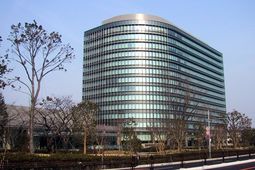
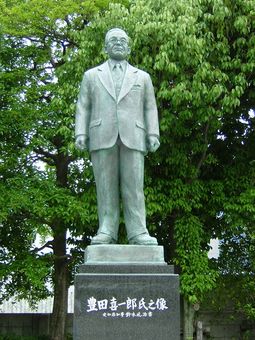
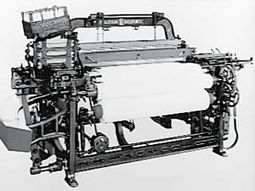
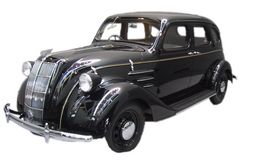
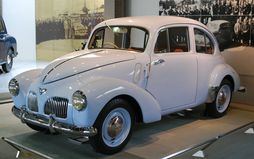
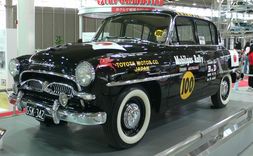
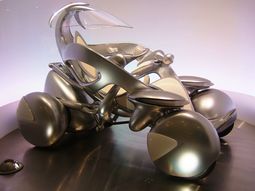
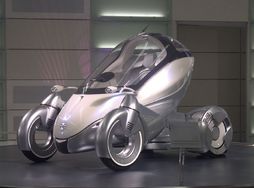
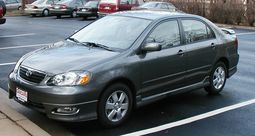
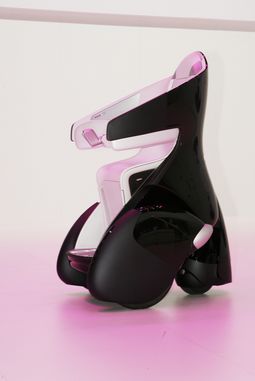
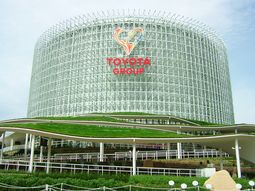
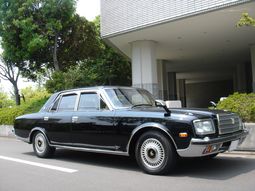
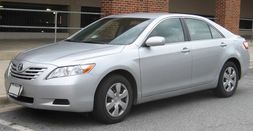
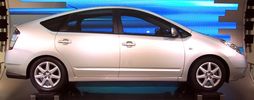
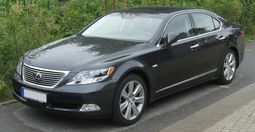
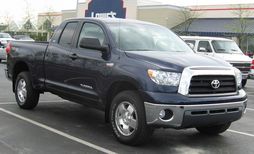
|